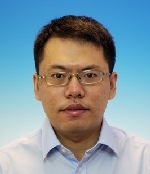Events
Apr 21, 2022
Seminar (2022-04-21)
School of Biomedical Sciences is pleased to invite you to join the following seminar:
Date: Thursday, 21 April, 2022
Time: 4:00 pm – 5:30 pm
Via Zoom: https://hku.zoom.us/meeting/register/tJAsf-irqDIuE9EML9scch1FJVKy4JbyeoDS
Meeting ID: 941 8136 9495
Password: 350442
Speaker: Dr. Rui Zhang, Assistant Professor, Department of Physics, The Hong Kong University of Science and Technology
Title: "Active Liquid Crystals from Engineered Biopolymers”
Biography

Dr. ZHANG Rui is currently an assistant professor of physics at HKUST. Before joining HKUST, he was a Distinguished Research Associate in the Pritzker School of Engineering at the University of Chicago. Prior to that, he was at the Levich Institute of Physio-Chemical Hydrodynamics at City College of New York. He obtained his B.S. in Physics from Fudan University. Dr Zhang is a computational soft matter physicist specialized in active matter, liquid crystals and nanofluidics. He has published in many top journals, including Nature Materials, Nature Reviews Materials, PRL, PNAS, Nature Communications, Science Advances among others.
Abstract
Active matter encompasses a wide spectrum of non-equilibrium systems, the constituents of which can convert energy into local mechanical work, giving rise to long-range collective dynamics. Examples include bird flocking, fish schooling and cytoplasmic streaming. Study of active matter can help us understand the physical mechanism of biological systems and facilitate biomimetic applications. A paradigmatic active matter system is active nematic liquid crystals (LCs), which consist of anisotropic units that can form a nematic phase. The self-propulsion of these units leads to large-scale spontaneous flows, nucleation and autonomous motion of topological defects, which may find applications in directed self-assembly and therapeutic delivery. However, control of the dynamics of active topological defects is notoriously difficult, limiting their further applications.
In this talk, I will introduce a highly controllable biopolymer-based active LCs. Specifically, I will discuss how actin filaments and myosin motors can be used to construct an active nematic. We show how an engineered myosin can be used to realize a spatially patterned active LCs, through which a high degree of control over the nucleation and trajectory of topological defects is acheived. We further propose an active LC-based microfluidic device in which these active topological defects can perform logic operations. Taken together, our research demonstrates the ability to control the structure and dynamics of topological defects in biological materials, and paves the way towards the design of autonomous materials.
ALL ARE WELCOME
Should you have any enquiries, please feel free to contact Miss Veronica Kwok at 3917 9515.

